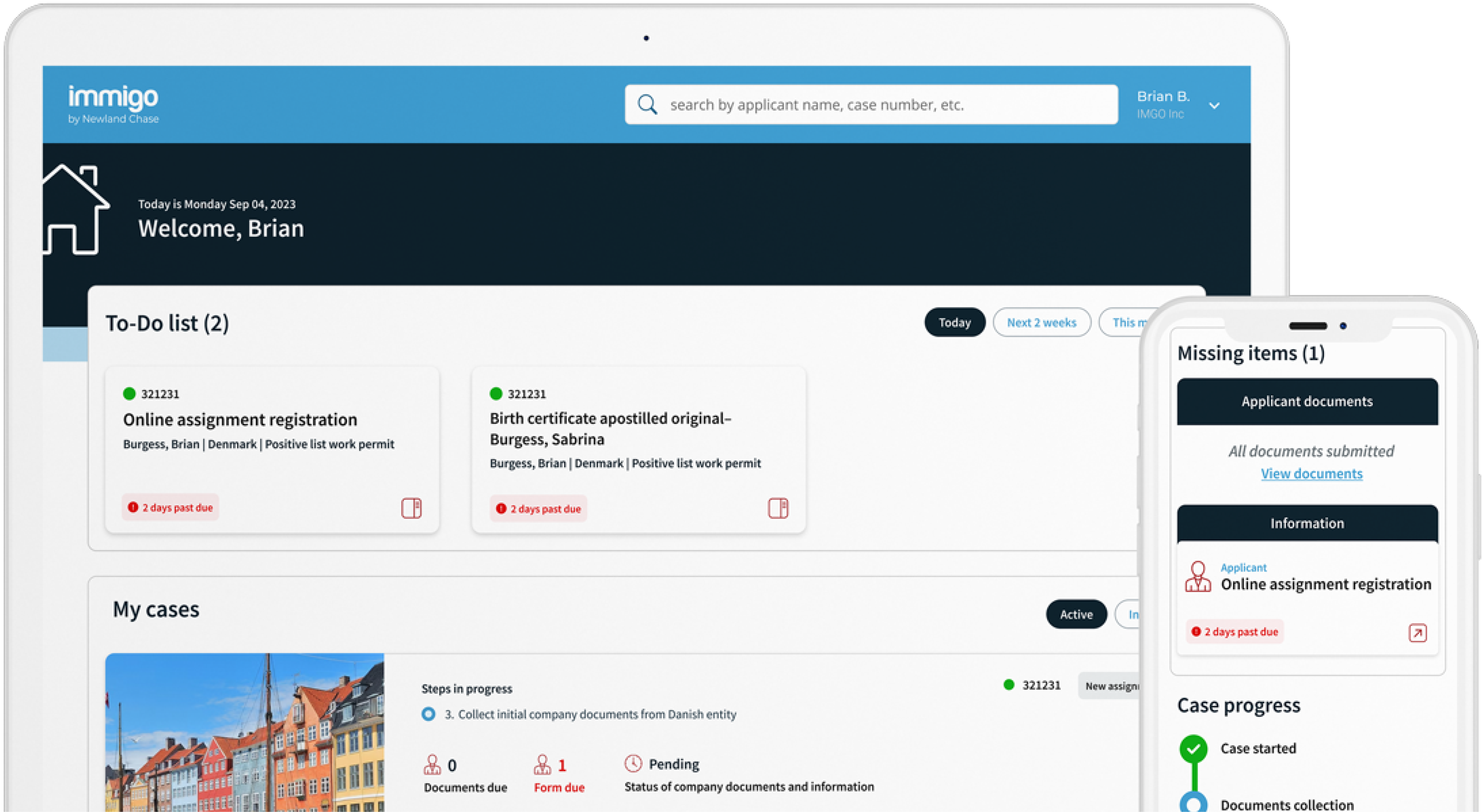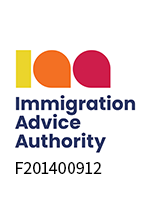Get The Visibility Your Company Needs
Reduce compliance risks and mobility costs while managing individual and project-related travel with ImmiSMART: the solution that unifies your travel and mobility programs.
White Paper | Revised EU Blue Card Directive Adopted by Council of European Union
January 11, 2022
 On-Demand Webinar with the European Commission | EU Blue Card Redesigned: Maximize New Program Benefits to Attract Highly-Skilled Workers
On-Demand Webinar with the European Commission | EU Blue Card Redesigned: Maximize New Program Benefits to Attract Highly-Skilled Workers
Register for our on-demand webinar as Newland Chase’s global immigration specialists are joined by Silvio Grieco, Legal and Policy Officer at the European Commission, for an overview of the new EU Blue Card Directive and a look at how employers can deploy European-specific recruitment strategies.
On 7 October 2021, the European Council adopted the Revised EU Blue Card Directive with the intent to streamline and harmonize the current EU Blue Card infrastructure throughout the region. Although long heralded as a premier immigration option for the European Union to attract highly-skilled non-EU nationals, the program has faced frequent criticism for being overly complicated, having inconsistent regulations in different member states, and, in some cases, providing only limited advantages compared to national work and residence authorization schemes.
The new rules, which will replace the existing ones, attempt to address these shortcomings by further standardizing the conditions of entry and residence for qualified candidates, expanding the eligibility criteria and access to labor markets, and facilitating intra-EU mobility for principal holders and their dependents alike.
The revised directive entered into force on 17 November 2021 (20 days after its publication in the Official Journal of the European Union on 28 October 2021). EU countries now have until 17 November 2023 to implement the revised directive into their national legislation.
EU Blue Card Background
First introduced by the European Council in 2009 via EU Directive 2009/50/EC, the program’s intent was to attract highly-skilled non-EU nationals to work and reside in the EU by offering incentives such as eased mobility between EU Member States and increased employment flexibility. In practice, however, the EU Blue Card remains under-utilized in most Member States and is often seen as a more restrictive option than national work and residence permits for two primary reasons:
- the advantages of the Blue Card are mostly for the employee and do not benefit the employer, and
- the application process for the Blue Card in many countries is more difficult than for national schemes.
Recognizing these shortcomings, the European Commission first presented a proposal to revamp the Blue Card scheme in June 2016 and this proposal has culminated in the revised directive recently adopted by the European Council.
“We must do everything we can to improve legal migration to Europe and, above all, facilitate the arrival of qualified workers who contribute to the development of our continent. A more attractive and viable scheme adds real value to the existing national schemes. In the future, we intend to go further so that workers in medium and low-paid jobs can contribute to our society in the same beneficial way that Blue Card holders can now.” – Javier Moreno Sánchez, Member of the European Parliament (MEP)
What’s Changed?
The revised Blue Card Directive has many significant changes and new advantages, the most notable of which include:
- Shortening of Required Employment Contract/Job Offer Validity – employment contracts/job offer should be of a minimum validity of six (6) months compared to the current 12-month minimum requirement.
- Shortage Occupation List Updates – a list of shortage occupations is included in the new Directive and will be subject to regular revision. Applicants in these shortage occupations will benefit from easier eligibility requirements compared to non-shortage occupation applicants.
- Expansion of Acceptable Qualifications – relevant professional experience will need to be considered as an alternative to higher educational qualifications: in lieu of the requirement to have a higher education qualification (such as a university degree), applicants in shortage occupations can demonstrate at least three (3) years of relevant professional experience and applicants in non-shortage occupations can demonstrate at least five (5) years of relevant professional experience.
- Lower General Salary Thresholds
- Shortage Occupations (and recent graduates applying for a Blue Card within three (3) years of having obtained their qualification): should earn at least the average gross annual salary or at least 80% of the salary threshold set for the EU Blue Card application in the EU Member State concerned. This is down from the requirement of current directive that salary should be at least 1.2 times the
average gross annual salary. - Non-Shortage Occupations: should meet the specific salary threshold chosen by each EU Member State for Blue Card applications, which would be at least 1.0 times but not higher than 1.6 times the average gross annual salary.
- Shortage Occupations (and recent graduates applying for a Blue Card within three (3) years of having obtained their qualification): should earn at least the average gross annual salary or at least 80% of the salary threshold set for the EU Blue Card application in the EU Member State concerned. This is down from the requirement of current directive that salary should be at least 1.2 times the
- Expedited Processing for Recognized Employers – processing time reduced to 30 days for employers registered through a “recognized employers” scheme.
- Increased Intra-EU Mobility Benefits
- Work Permit not required for EU Blue Card holders to exercise short-term business in other EU Member States for up to 90 days in any 180-day period. The new directive defines business activity as “a temporary activity directly related to the business interests of the employer and to the professional duties of the EU Blue Card holder based on the work contract in the first Member State, including attending internal or external business meetings, attending conferences or seminars, negotiating business deals,
undertaking sales or marketing activities, exploring business opportunities, or attending and receiving training.” - Ability to work in other EU Member States: EU Blue Card holders will have the right to move to work in a second EU Member State after only 12 months of residence (down from 18 months) in the first EU Member State. Applications for an EU Blue Card in the second Member State can be submitted under a simplified procedure while in the first Member State, or not later than 30 days of entry in the second Member State. Work must be able to begin no later than 30 days after the date of submission of the application.
- Work Permit not required for EU Blue Card holders to exercise short-term business in other EU Member States for up to 90 days in any 180-day period. The new directive defines business activity as “a temporary activity directly related to the business interests of the employer and to the professional duties of the EU Blue Card holder based on the work contract in the first Member State, including attending internal or external business meetings, attending conferences or seminars, negotiating business deals,
- Ability to Travel Within the EU – the new EU Blue Card Directive facilitates travel of Blue Card holders so that they don’t require further visa or authorization for 90 days in any 180-day period for business purposes in the whole of the EU (not only in the Schengen Area).
- More Opportunities for Self-Employment – an expansion of the scope of acceptable activities for EU Blue Card holders includes having the right to exercise self-employment activities in more circumstances.
- More Favorable Conditions for Family Reunification
- Dependent applications should be processed alongside the principal applicant’s application and these dependents will also be allowed to accompany the principal applicant immediately.
- Spouses will be granted work authorization.
- More Favorable Conditions with regards to Unemployment – the EU Blue Card shall not be withdrawn and its renewal shall not be refused in the event of the unemployment of the EU Blue Card holder, except where:
- the EU Blue Card holder cumulates a period of unemployment exceeding three (3) months and has held an EU Blue Card for less than two (2) years; or
- the EU Blue Card holder cumulates a period of unemployment exceeding six (6) months and has held an EU Blue Card for at least two (2) years.
Previously the EU Blue Card could be withdrawn when the period of unemployment exceeded three (3) consecutive months or when it occurred more than once during the period of validity, regardless of how long its holder held the permit.
- Shorter Period During Which Approval is Required for Change of Employment – Member States will only be able to require a change of employment notification during the first 12 months of legal employment by the Blue Card holder for the purposes of labor market assessments (reduced from the current two-year period). While a change of employment notification may be required after the first year of employment, the authorities will not be able to conduct a labor market test to determine if the vacancy can be filled by a local candidate.
- Additional Application Options – applying for a Blue Card from within the EU and/or swapping from other EU residence permit categories to the Blue Card while in an EU Member State will be facilitated.
Finally, it is important to note that the revised directive maintains that EU Member States can still issue national residence permits for the purpose of highly-qualified employees, as long as the national permit is not issued under more favorable conditions than those of the EU Blue Card when it comes to recognition procedures for employers, processing times, government application fees, and access to self-employed activities.
Newland Chase Insights
The current EU Blue Card scheme might be described as “great in theory, but challenging in practice.” These new rules endeavor to make the program more attractive to employers and non-EU nationals alike, not only in theory but in the execution and infrastructure of the permit itself. A few key items to keep in mind as Member States begin adopting the revised directive over the next two (2) years:
- Expect the EU Blue Card option to become more popular in EU countries as the permit begins to provide similar or better advantages as some national schemes for highly-qualified applicants.
- Consider leveraging your current and future EU Blue Card holders to EU and intra-EU moves in the future.
- IT companies should be aware of the special regimen of shortage occupations in the Information and Technology sector.
Newland Chase will continue to monitor and report on the implementation status of the revised directive over the upcoming months and years. We are uniquely positioned to successfully manage your EU Blue Card needs.
As always, don’t hesitate to reach out to your Newland Chase dedicated contact or submit an inquiry here should you have any specific questions regarding this program.
View as a downloadable white paper
This immigration update is for informational purposes only and is not a substitute for legal or scenario-specific advice. Furthermore, it is important to note that immigration announcements are subject to sudden and unexpected changes. Readers are encouraged to reach out to Newland Case for any case- or company-specific assessments.
Newland Chase, a wholly owned subsidiary of CIBT, is the leading global provider of immigration and visa services for corporations and individuals with over 1,700 expert immigration and visa professionals, attorneys and qualified migration consultants located in over 70 offices in 25 countries.
With thirty years of experience, CIBT is the primary service provider to 75% of Fortune 500 companies. CIBT offers a comprehensive suite of services under two primary brands: Newland Chase, focused on global immigration strategy and advisory services for corporations worldwide and CIBTvisas, the market leader for business and other travel visa services for corporate and individual clients.




